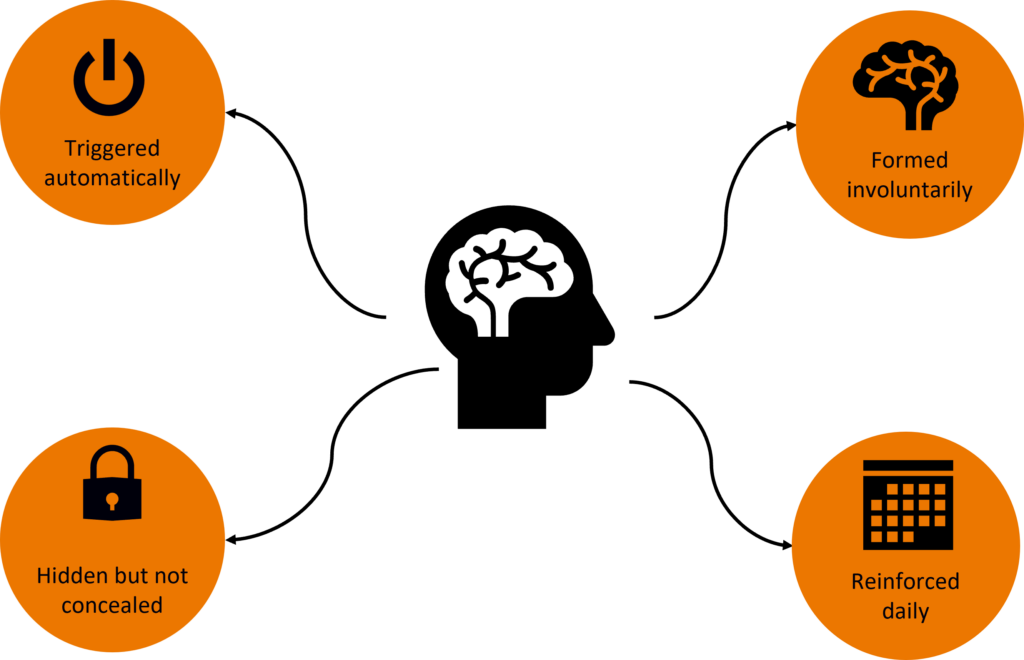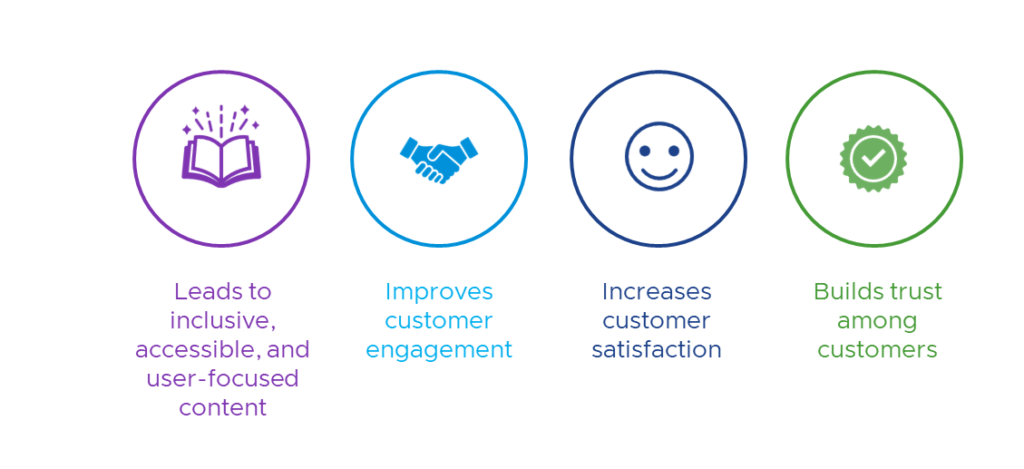
 Anita Chaudhari and Vidya Vasudevan, VMware
Anita Chaudhari and Vidya Vasudevan, VMware
July 15, 2022
As technical writers, we don different hats at different stages of producing technical content. We interact with people who perform various roles and have varying degrees of technical capabilities. Our audiences are of different genders, are from different geographical locations, different religions, cultures, and ethnicities, and might have different disabilities.
As writers, we do audience analysis, plan, design, and document our content accordingly. So where are the gaps? What we might be overlooking are the biases that creep in.
Are we biased?
Let us start by asking ourselves if we are biased. Do we draw comparisons and categorize people into groups? Do we constantly form opinions about people based on how they look, their gender, their color, what they wear, what they eat, and so on? If our answer to any of these questions is “yes”, then we are biased.
What is unconscious bias?
Bias is not always bad, but if we oppose or support a person or an idea in an unfair way because of a bias, then that becomes a problem. But we are not always doing this on purpose.
Biases can be conscious or unconscious. Conscious bias refers to the attitudes or beliefs that we are aware of.
Unconscious bias refers to the ones that we are unaware of. It is also known as implicit bias and is deep-seated in the brain, below the conscious level.
These biases happen automatically and are triggered when our brain makes quick decisions from data it gathers and then tries to add meaning to it. They form involuntarily from our experiences.
These biases are constantly reinforced without us giving a conscious thought to it. We are unconsciously biased if we associate stereotypes towards others. Many of us are not even aware that stereotypes come to mind automatically. When we do not know something, we unconsciously allow those stereotypes to guide our behavior. These biases are hidden but not concealed.

Here are some unconscious biases:
- Attribution bias occurs when we explain a person’s behavior by referring to their character instead of the situation. This leads us to giving more importance to the type of person doing the action, instead of the factors causing the action.
- Conformity bias occurs when we behave like others around us instead of using our own judgment.
- Confirmation bias is when we make decisions about people or situations that are based on our own experiences, beliefs, or pre-conceived thoughts.
- Affinity bias leads us to prefer people who we feel that we have a connection or similarity to.
- Anchor bias happens when we use the first or a specific piece of information as an anchor for our ideas and decisions.
- Authority bias occurs when we tend to follow the instructions of an authority figure without questioning their goals or methods. This bias results in a sense of obligation to listen to authority.
- Status Quo is when we prefer our environment or situation to remain as is, resulting in resistance to change.
- Recency bias is when we remember or give more importance to events that are freshest in our memory.
- Perception bias happens when our perception is influenced by incorrect stereotypes and assumptions, instead of reality. It can include a range of other biases, including age, gender, and height.
- Contrast effect occurs when we compare one thing against another, instead of assessing individually.
- Halo effect is when we form a perception of someone or something based on a single positive attribute.
- Horns effect is the opposite of Halo effect. It occurs when we form a perception of someone based on a single negative attribute.
- Name bias is when we prefer certain names over others.
- Ageism is when we stereotype or discriminate against individuals based on their age.
- Attractiveness bias is when we think that people we perceive as attractive are more competent at their jobs. Skin tone bias and race bias are a part of this.
- Height bias occurs when we perceive taller people as more authoritative and leader-like.
- Gender bias is when we prefer one gender over another.
Unconscious bias and the documentation Development Life Cycle (DDLC)
The DDLC consists of the Analysis, Design, Development, Review, and Publishing stages. To see how unconscious biases can affect technical writing, let us look at the biases that occur at each stage.
Analysis Stage: When we do our audience analysis, we probably make assumptions about our audiences that are based on their gender, age, appearance, and so on. We tend to overlook their geographical locations and cultural backgrounds. We also probably assume that people in similar roles do things alike.
Design Stage: Most of the time, our design-related decisions are influenced to meet the expectation of majority and we often end up ignoring the rest of the audience and overlooking accessibility aspects. We also overlook the medium of publishing our content and compatibility with various operating systems. While preparing usability test plans, missing user scenarios can cause a gap in our content being accepted by our audiences.
Development Stage: When we develop content, we might tend to use jargon and non-inclusive terms. We might also be relying on a single point of contact for getting information and be rigid with writing strategies. We could be overlooking tone of voice, religious, and cultural references, and being disrespectful to our audiences’ preferences.
Review Stage: In the Review stage, the common mistake that we make is not selecting our reviewers consciously. We might not consider different roles, functions, and level of expertise of the reviewers. We might blindly accept feedback from authority figures. We might not consider a diverse pool of reviewers.
Publishing Stage: In the Publishing stage, we might not consider localization of content or making content available to global audiences at the same time. Also, we might overlook all possible formats of content consumption.
How do we tackle these biases?
The first step is to change the way we think. A changed mindset is the key to bringing about change in the way we do things. We must:
- Accept that we have blind spots
- Slow down and think before we react
- Put ourselves in our audience’s shoes and understand their perspective
- Question our assumptions about people and situations
- Develop cultural intelligence
- Cultivate diverse friendships
- Identify counter stereotypes
Let us now relook at each stage of the DDLC with this new mindset.
Analysis Stage: We must avoid assumptions in cross culture communication, be mindful of our behavior when we communicate, and conduct holistic audience analysis.
Design Stage: We must consider audiences with disabilities, and unify verbal and visual aspects of our content. We must do a thorough research on how some words and images are interpreted across the world and avoid using any term or visual that might be offensive to someone.
Development Phase: We must always write inclusive, unbiased, and accessible content. We must also be careful of the tone of voice while writing content. We must be open to changing our writing strategy and adapt a new idea as required.
Review Stage: We must make sure that our reviewers list is culturally inclusive and diverse and has members from various roles and functions. We must not equate function with expertise.
Publishing Stage: We must plan the localization schedule, consider global audience preference, and consider different format requirements of our audiences.
Takeaways
By watching out and dealing with all these biases, we make our correct, complete, concise, and clear documentation even better!

